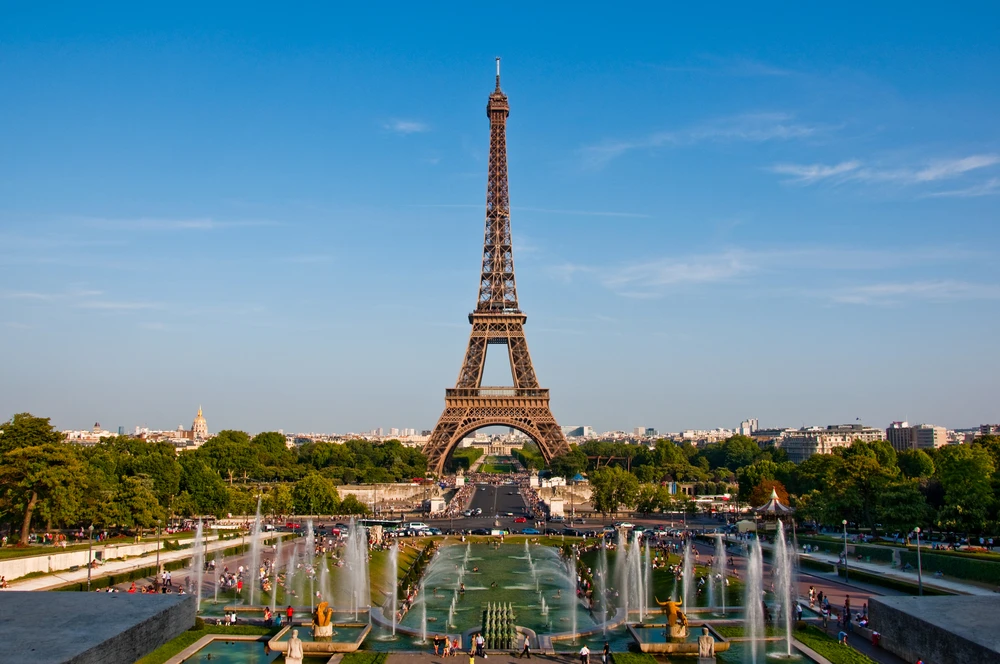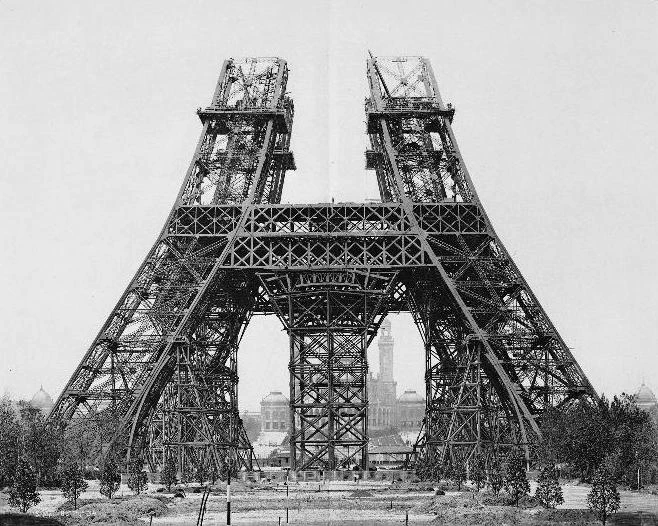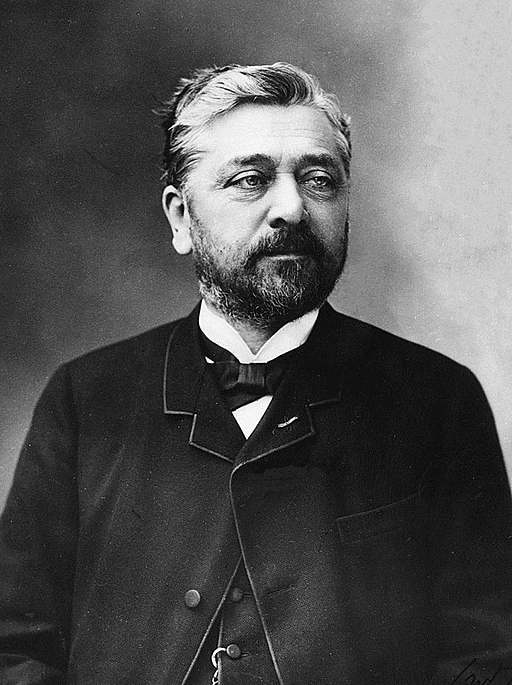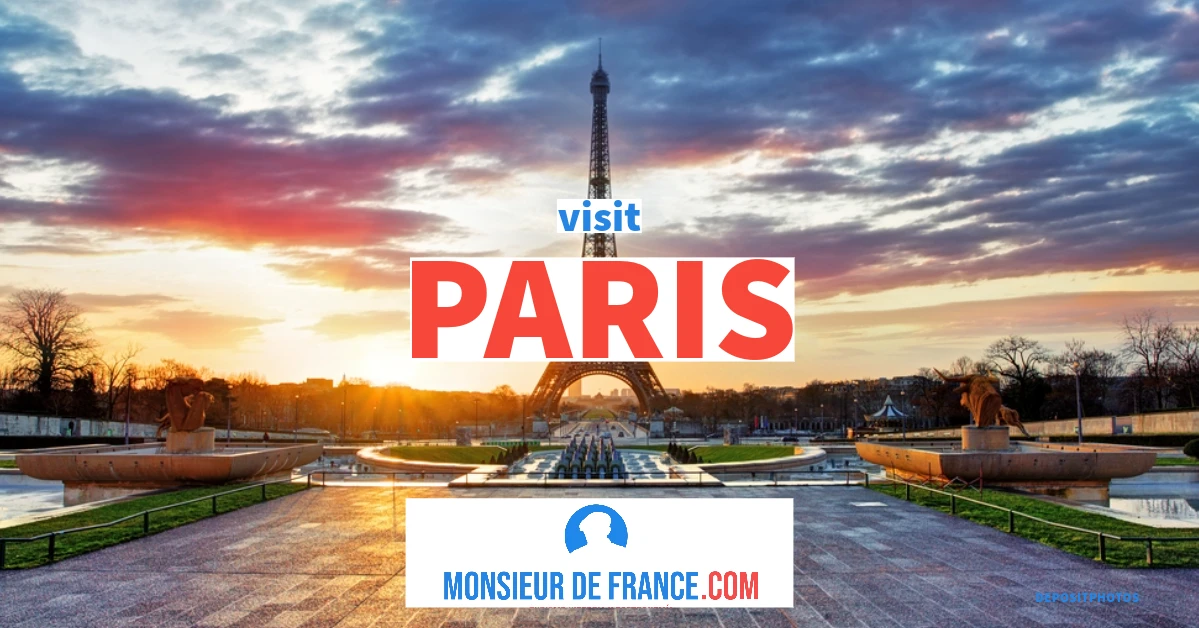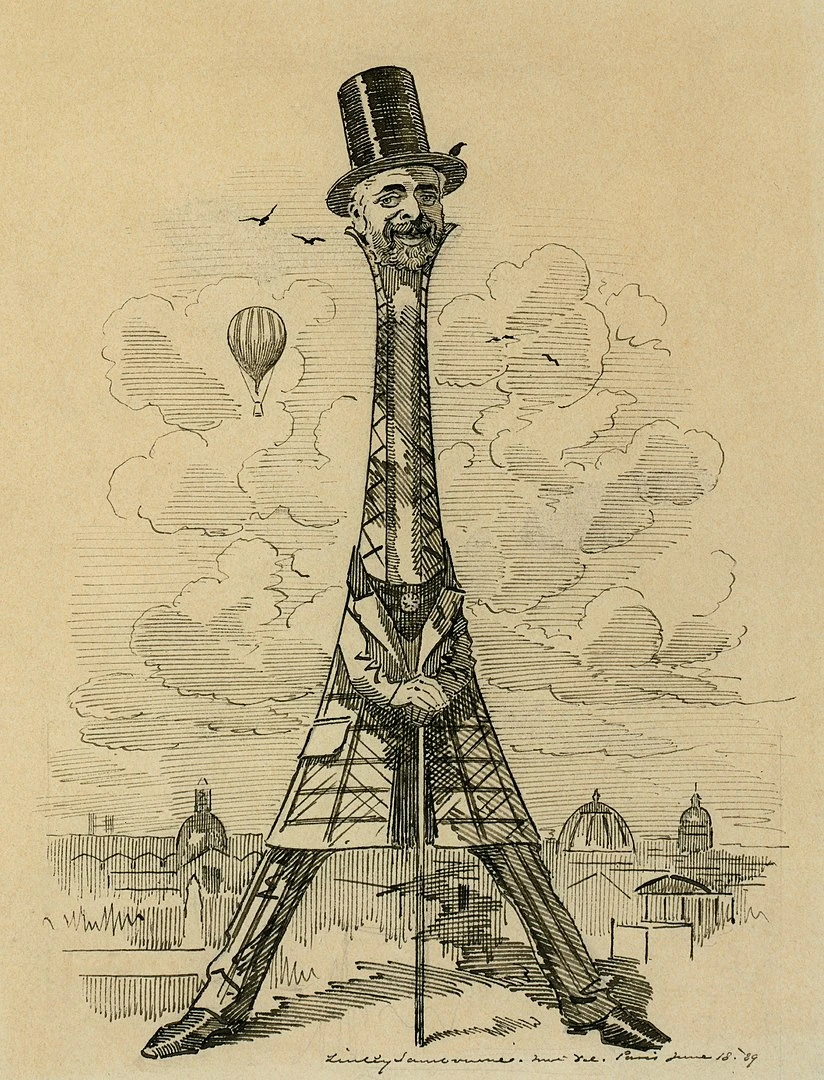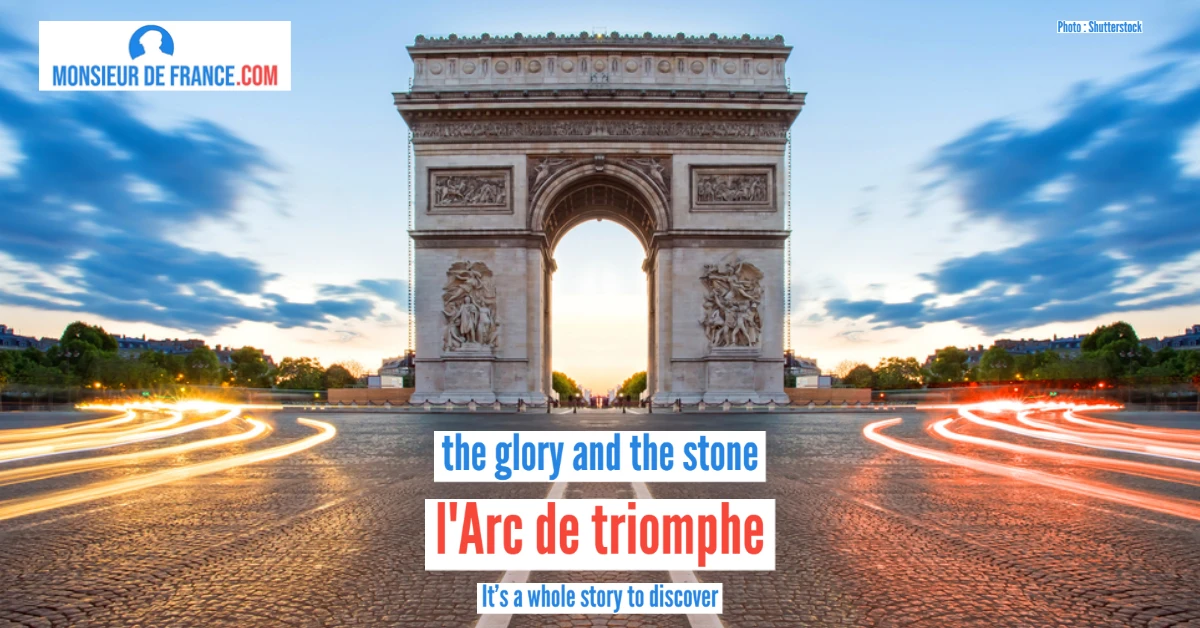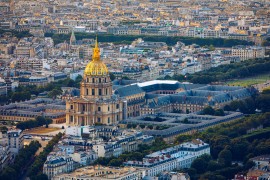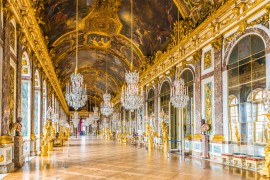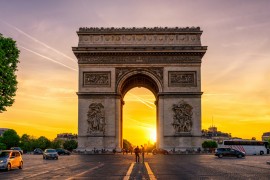1 How heavy is the Eiffel Tower?
It weighs exactly 10,100 tonnes. That's 18,038 parts and 2,500,000 bolts. The whole thing is made of iron, not cast iron as we often read. Puddled" iron, melted in Pompey, near Nancy in Lorraine, and transported to Paris for assembly.
2 How high is the Eiffel Tower?
It officially measures 330 metres from the ground to the tip of the antenna. 312 metres without the antenna. This made it the tallest tower in the world for almost 40 years: from 1889 to 1930, the year of construction of the Empire State Building in New York; not far from the world's most famous French landmark: the Statue of Liberty, designed by Bartholdi with the help of Monsieur Eiffel. At the time of its conception, the Eiffel Tower was precisely 300 metres high, but something was always added to the tower, first and foremost the French flag, which was 12 metres higher than the actual top of the Tower.
For the other dimensions, the legs form a 125-metre square. Each pillar foot is 25 metres on a side. If you climb to the second floor , you'll be 57 metres up, the second floor 115 metres, and if you use one of the 5 elevators, you'll reach the top floor at 276 metres .
The Eiffel Tower seen from the Trocadero. Photo chosen by monsieurdefrance.com: phototraveller via Depositphotos.
3 True or false: the height of the Eiffel Tower can vary?
In short, heat expands the puddled iron, making the Tower grow taller, or cooler, making it shrink. It's imperceptible to the naked eye, but the difference is about twenty centimetres over a year. It may shrink a little if the temperature is below 0°C, and it may grow a little if the temperature is above 30°C. Sometimes the sun only warms one side of the Tower, in which case the Tower tilts to the other side due to the heat. In any case, whether it moves or not, it's solid: it hasn't moved since 1889. French solidity!
4 True or false: the Eiffel Tower is the most visited monument in the world?
Also true! To be more precise, it's the most visited monument in the world. The beautiful lady attracts over 7,000,000 visitors a year.
5 What color is the Eiffel Tower?
She's been "Eiffel Tower brown" since the 70s. It's her 7th color. Originally, it was... Venice Red. It has also been yellow-brown. It takes over 60 tons of paint to paint the whole thing. And it's done regularly. Beyond its aesthetic appeal, painting also protects it... From rust, since it's made of iron. To do this, you sometimes have to be suspended in mid-air, which is what some fifty painters do. They need over 50 kms of cable. Their equipment, from paint buckets to brushes, is attached to them to prevent them from falling, which would be very dangerous for people passing overhead. Safety nets provide additional protection.
The color of the Eiffel Tower today is "Eiffel Tower Brown" photo chosen by monsieurdefrance.com: Samos via Depositphotos.
6 How long did it take to build the Eiffel Tower?
2 years, 2 months and 5 days to be precise. Which is extremely short! Construction began on January 26, 1887, and was completed on March 31, 1889. It was on this day that Monsieur Eiffel was awarded the Légion d'Honneur, at the very top, on the 3rd floor.
1888: The Eiffel Tower under construction.
7 The Eiffel Tower is the only work by Monsieur Eiffel, true or false?
Monsieur Eiffel in 1888, a year before the inauguration of the Tower that bears his name. Illustration chosen by monsieurdefrance.Com: Nadar.
Wrong! Gustave Eiffel built many structures, including his first major project in Bordeaux in 1855, the 510-metre Bordeaux railway bridge. He and his workshops were responsible for many other bridges in France, Portugal, Algeria and Viet-Nam (then French colonies). He also built lighthouses in Finland, Estonia, Brazil and France, such as the Fromentine lighthouse in the Vendée, and created the skeleton for New York's Statue of Liberty in collaboration with sculptor Bartholdi.
8 The Eiffel Tower had to be dismantled True or false?
It's true! It was to be dismantled later, but Gustave Eiffel did all he could to save his work , finding other uses for it besides its record height and beauty. It was radio that saved the Eiffel Tower when a transmitter was installed for the army (linked to a command post on the Champs de Mars just below). Monsieur Eiffel also turned the Tower into a weather station , and looked to it for other useful purposes, such as measuring radioactivity or analyzing air quality (he was ahead of his time).
9 The Eiffel Tower has been sold - true or false?
It's true! Shortly after Gustave Eiffel's death (1923) in the late '20s, a swindler named Victor Lustig led Paris's biggest ironmonger to believe that the government considered it too expensive to maintain the Eiffel Tower, and wanted to dismantle it and dispose of the 7,300 tons of iron to the highest bidder. A buyer came forward. Named André Poisson, he did not reveal that he had been swindled for fear of ridicule, which enabled Lustig to flee to Austria and then to the USA, where he tried to sell the Eiffel Tower a 2nd time before being caught and ending his days in Alcatraz prison (in the cell next to Al Capone's), ending his days in 1947.
10 True or false: the Eiffel Tower was hated when it was inaugurated?
True and false. This "300-meter tower", announced as the showpiece of the 1889 Paris Exposition Universelle, took many by surprise. It was by no means discreet, towering far above the towers of Notre Dame or the Dôme des Invalides, the tallest monuments of the time. The color was also very conspicuous, as the Eiffel Tower was originally painted red... "Venice red" to be precise. And then there were those who found it ugly and were distressed to see it spoiling Paris, which at the time was brand-new in the style we know today, as Baron Haussman's work to literally renew Paris on itself continued.
Caricature of Gustave Eiffel in an English magazine in 1889. Wiki commons.
Among the detractors were such famous names as writer Guy de Maupassant, composer Charles Gounod and even Charles Garnier, architect of the Paris Opera. In fact, 47 artists signed a letter of protest against the Eiffel Tower project itself. Although construction has not yet begun, they wrote: "
We have come, writers, painters, sculptors, architects, passionate lovers of the hitherto unspoiled beauty of Paris, to protest with all our might, with all our indignation, in the name of disregarded French taste, in the name of threatened French art and history, against the erection, in the very heart of our capital, of the useless and monstrous Eiffel Tower, which public malignity, often imbued with common sense and a spirit of justice, has already christened the "Tower of Babel". Without falling into the exaltation of chauvinism, we have the right to proclaim loud and clear that Paris is the city without rival in the world. Above its streets, its widened boulevards, in the midst of its magnificent promenades, rise the noblest monuments that the human race has ever produced. The soul of France, creator of masterpieces, shines through this august flowering of stone. Italy, Germany and Flanders, so justifiably proud of their artistic heritage, have nothing comparable to ours, and Paris attracts curiosity and admiration from every corner of the globe.
Are we going to let all this be desecrated? Is the city of Paris any longer going to associate itself with the baroque, mercantile imaginations of a machine builder, only to be irreparably damaged and disgraced? For the Eiffel Tower, which commercial America itself would not want, is, let there be no doubt, the disgrace of Paris. Everyone feels it, everyone says it, everyone is deeply distressed by it, and we are but a faint echo of universal opinion, so legitimately alarmed".
Guy de Maupassant hated the Eiffel Tower. Photo chosen by monsieurdefrance.com: Eugène Renouard
Gustave Eiffel's answer:
"Is it nothing to the glory of Paris that this summary of contemporary science should be erected within its walls? The protest describes the tower as "an odious column of bolted sheet metal". I have not seen this tone of disdain without being irritated. Among the signatories are men I admire and esteem. There are others who are known for painting pretty little women putting a flower on their bodice, or for having wittily turned a few vaudeville couplets. Well, frankly, I don't think the whole of France is in this".
In any case, we'd have amazed a lot of the signatories if we'd told them that, not only would the Eiffel Tower endure in time, but it would also become the symbol of Paris and even of France.
Sorry for the translation errors, our translator fell in love in Paris and we never see him, he's always having sex. So we did the best we could ...
Discover the amazing history of the Arc de Triomphe

